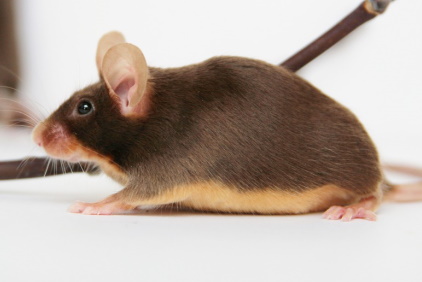Fancy Mice Environment
A pet mouse cage needs to be large and full of toys and enrichment. The floorspace of your cage is called its 'footprint' and for female mice height is more important whereas male mice prefer more horizontal space. Rat cages are fine for mice providing bar spacing is under 1cm and a good guideline for a small group of mice is a floorspace of 80 x 40cm.
Pet shops woefully underestimate the suitability and size requirements needed for mice so please do not be conned into buying tiny tanks or modular systems. Rotastak is not suitable for any rodent. For reasons why see our article on Why Modular Systems are Bad for your Pet.
Pet mouse Cage types
- Wire cages: these give excellent ventilation and are good for climbing. You can hang plenty of toys from various positions and can interact with your animal through the bars. They can be quite difficult to clean. They provide much better opportunities for taming and enrichment. Ensure bar spacing is 1cm or less to prevent escapees.
- Glass tanks: - needs work to allow climbing material and are much more difficult to interact with your mice as they will consider hands from above very predatory. Very easy to clean but have poor ventilation. Do not use these with the standard heavy lids for fish - a staple gun, some 1mm wide wire mesh and bits of wood can easily make a decent lid to allow more air to pass through.
- a RUB: - if you are taking in rescues or money is an issue a plastic storage box can be converted into a RUB container for rodents. You must mesh top and all sides to allow adequate ventilation and ensure you go for a size that meets minimum unbroken floorspace requirements.
Always go for the largest cage your budget can afford - second-hand cages come up frequently.
Substrate and bedding
Sawdust, or anything pine or cedar based should not be used since it can affect the lungs of mice and cause respiratory problems. Items such as Carefresh are quite good and absorbent, whilst still allowing space for burrowing. A cheaper alternative for this is to get a horse bedding such as MegaZorb.Other suitable substrates include Ectopetbed, bedexcel and finacard.
Hay is a good addition to a pet mouse setup since mice love chewing this and it also aids their digestion.
For bedding avoid the soft cotton-wool style as this can tangle mouse limbs, the recycled shreds of paper or strings are good for nesting.
Toys and Nests
Wooden and plastic toys are suitable for mice, providing you don't have an obsessed chewer. Wooden items retain scent more and do need more frequent cleaning but they will provide better enrichment as they are safer to chew than plastic.
Bendy bridges, ladders, cardboard and plastic tubes are all good additions.
Some commercially available toys are not suitable for pets as they are composed entirely of sawdust which is dangerous for your pet to digest.
Your mice must have multiple nesting sites available, coconut shells, wooden houses and fabric items are also fine. You can also hang fabric ropes and pet-safe hammocks. These must be washed regularly and checked frequently and trimmed of any dangerous loose threads.
Wheels
Wheels must be solid-based and not have spokes. Your mouse needs to be able to run easily without an arched back, with 8 inches being a good size for this. Mice benefit greatly from wheels and can also enjoy flying saucer type wheels which help avoid squabbles when more than one mouse is in a mood for running.

